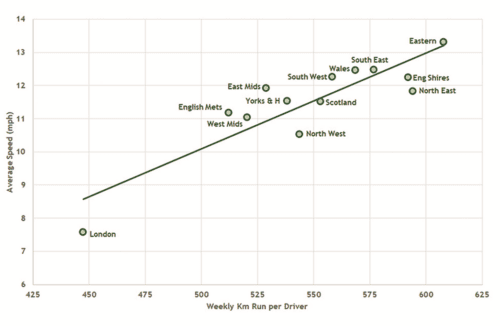 The CPT’s fourth report confirms a slowdown in the rate of increase in costs for the 12 months to February 2024, and suggests a 10% increase in bus speeds has the potential to deliver 135 million miles of extra services each year at no extra cost.
The CPT’s fourth report confirms a slowdown in the rate of increase in costs for the 12 months to February 2024, and suggests a 10% increase in bus speeds has the potential to deliver 135 million miles of extra services each year at no extra cost.
The twice-yearly CPT Cost Monitor Report analyses industry costs, examines operating costs per hour and per kilometre, and tracks movements over time. It also presents a range of KPIs covering service provision, fleet utilisation, fuel consumption, and staff productivity. The fourth report, based on an independent industry-wide survey of bus industry operating costs, has found a significant slowdown in the rate of increase in costs in the 12 months to February 2024, At the same time, analysis of the figures suggests that a 10% increase in bus speeds has the potential to deliver 135 million miles of extra services each year at no extra operational cost.
Commenting on the results, Operations Director at the Confederation of Passenger Transport Keith McNally said: “The latest data shows overall gross costs rose by 3.1% in the year to February 2024 in Great Britain outside London. But that translates into a real-term fall of 3.7% after adjustment for inflation to December 2023 prices. This was a marked improvement on the previous two years, when costs had risen by over 16% above inflation.”
The report also highlights how the 7.6% increase in labour costs during the year was a sign that the pressure on costs had not gone away: “Last year, those increases were offset by savings and efficiency improvements elsewhere,” he added, “but we cannot assume that such savings can always be achieved.”
The latest report also confirms that bus speeds remain low, averaging 11.7 mph across Great Britain outside London in February 2024 (to allow for passenger boarding/alighting times and because of delays due to traffic conditions). The analysis highlights the close correlation between bus speed and driver productivity (measured in terms of weekly kilometres run per driver).
Speaking about this, Keith continued: “If bus speeds could rise by just 10%, through giving buses greater priority on our roads, then every driver could cover an additional 34 miles every week. Given bus operators employ around 84,000 drivers, this alone could enable operators to provide an additional 135 million miles of services each year at no extra cost.
“This improvement could be delivered as extended hours of operation, and more frequent or more weekend services as well as new routes. In some areas, a 10% improvement in average speed would help maintain routes where rising costs and changing revenues threaten to make services unviable.”
The CPT hopes the data provided by its Cost Monitor report will help inform constructive discussions and negotiations between transport authorities and bus operators about service levels, inflationary increases applied to contract prices, and about how to fund the future services passengers want.

